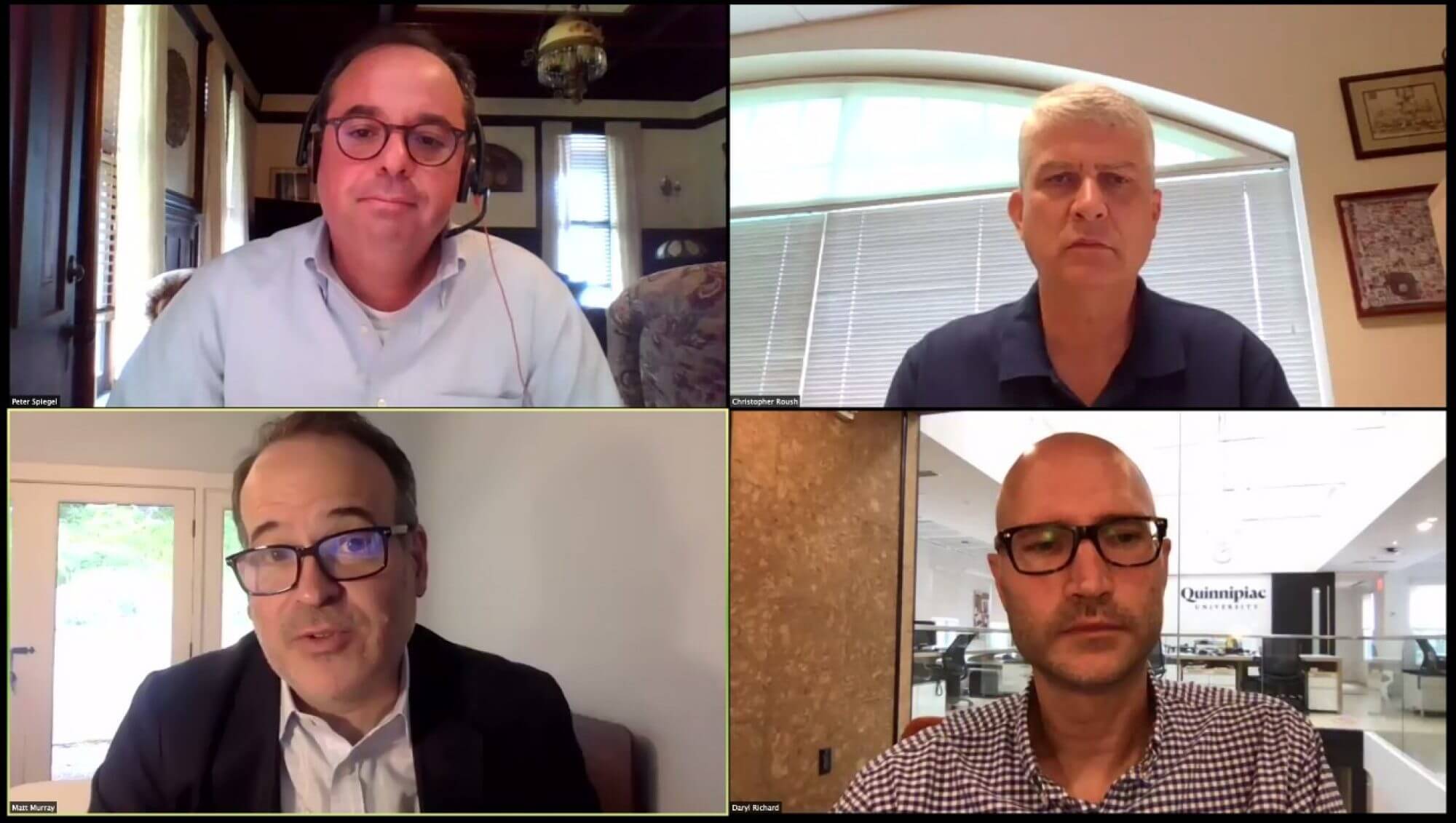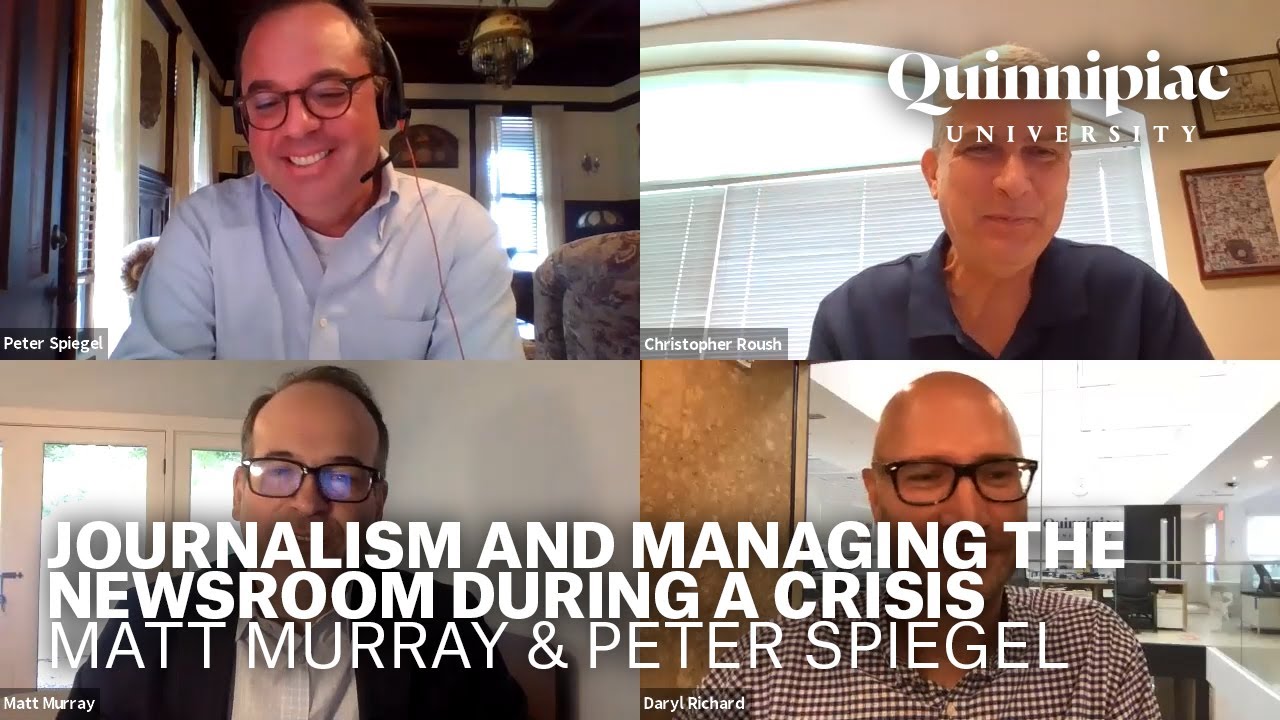
Newsrooms prioritize digital coverage during COVID-19 crisis
July 17, 2020

July 17, 2020

Matt Murray, editor-in-chief of the Wall Street Journal, and Peter Spiegel, US managing editor of the Financial Times, said international financial media organizations have had to balance concerns about the safety of its employees with the increased difficulty of communicating with each other remotely.
“There's definitely anxiety and people definitely feel it, but we had a simple rule: Nobody should go into any situation, or do any reporting, that makes them personally uncomfortable,” said Murray. “Their personal safety and feeling of security is paramount.”
“The ability to coordinate from a management perspective has been much more of a challenge because you're not in the newsroom,” Spiegel added, describing the challenging lack of being able to overhear coverage plans in other sections and by other reporters within the same organization. “The fun of being a reporter is being in that newsroom and interacting with really smart, fun, interesting colleagues.”
The virtual discussion, held on July 17, was moderated by Chris Roush, dean of the School of Communications, and Daryl Richard, vice president for marketing and communications.
However, the process has inspired news organizations around the world to further prioritize their digital products.
“We've seen a growth in our online traffic,” Spiegel said. "Our numbers are almost double what they were at the peak of the Brexit crisis, which was our previous all-time high.”
He said an increasing number of people are turning to trusted brands — and paying for coverage — so that they can have confidence in the facts they are reading.
Murray said that over the past few years, the Wall Street Journal has been restructuring to be more digitally oriented — and it’s paid off.
“Sometimes people forget that the Wall Street Journal, the Financial Times, The New York Times, these news organizations are tremendously successful at getting people to pay for their online content,” Spiegel said. “We're up 40 percent, I think in the last two, three years. That, to me, says, there is a market out there for quality journalism."
The New York Times, Financial Times, The Wall Street Journal and The Washington Post all likely have the most subscribers ever, Murray said. However, the editors warned local news is “withering on the vine."
In some ways, Spiegel said, publications like the Wall Street Journal and Financial Times — that focus on financial industries — are able to adapt to remote coverage during the COVID-19 crisis because most of the people they would interview are still working from home as well.
However, current events like the Black Lives Matter protests make this remote coverage more difficult.
"The George Floyd protests sort of put us in a in a difficult position because we were very nervous about the prospect of spreading the COVID so, we picked someone more senior correspondence to go out and made sure they had the proper training.”
However, as an industry, Spiegel said journalists largely lack strong diversity in the newsroom.
“There’s a lot of emotion tied to that and trying to cover the story objectively and deal with some very fraught emotions in the newsroom. It would have been easier if we were in the newsroom, and instead we had to administer these town hall calls on Zoom and on Google Hangout, which are impersonal,” Spiegel said. “I think we all come to the table with our own experiences, with our own biases, and the thing is to acknowledge them and then try to put them away. I think if you feel very strongly about these issues, you have an incredibly powerful tool to deal with them: It’s called journalism.”
Spiegel said news judgment is not a science.
"It is the collective wisdom of a fallible group of human beings who run any news organization,” he said. “You see all this anger on Twitter that is bias and stuff like that. Those same debates happen in editorial conference rooms every day. I think, to say that that media is biased is unfair in that we are a human organization that has to make judgments every day. And sometimes we get it right. Sometimes we get it very wrong."
“Technology itself is changing,” Murray said. “In five years, maybe, the number one way, people get journalism from the Wall Street Journal will be voice. Half of Google searches are now on voice. Adapting more quickly to the change of technology — while not losing the traits that made you what you are journalistically — is the task for any newsroom today, and it continues to evolve. So five years from now, I know it will be quite different.”
He warned deep fakes will test society soon.
“There's a role for us because we could be the truth authenticators and the verifiers in that kind of a world, but the continued evolution of technology itself is going to shape the future of the industry,” Murray concluded.

Quinnipiac Today is your source for what's happening throughout #BobcatNation. Sign up for our weekly email newsletter to be among the first to know about news, events and members of our Bobcat family who are making a positive difference in our world.
Sign Up Now